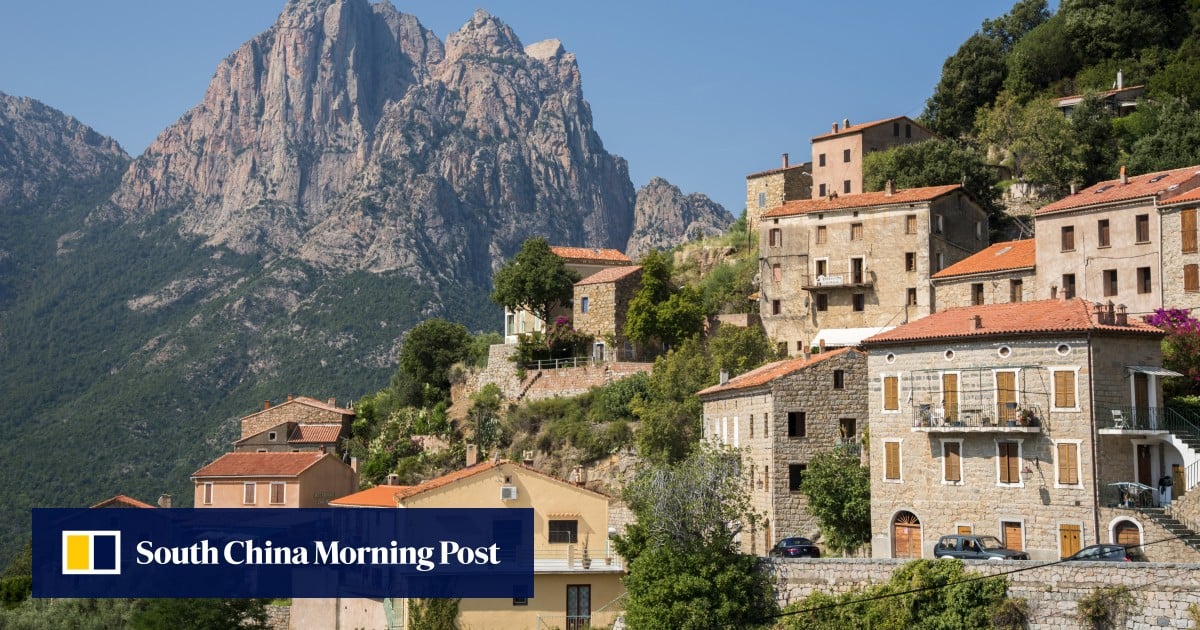The more precarious a road is, the faster Corsican motorists come hurtling around the corner.
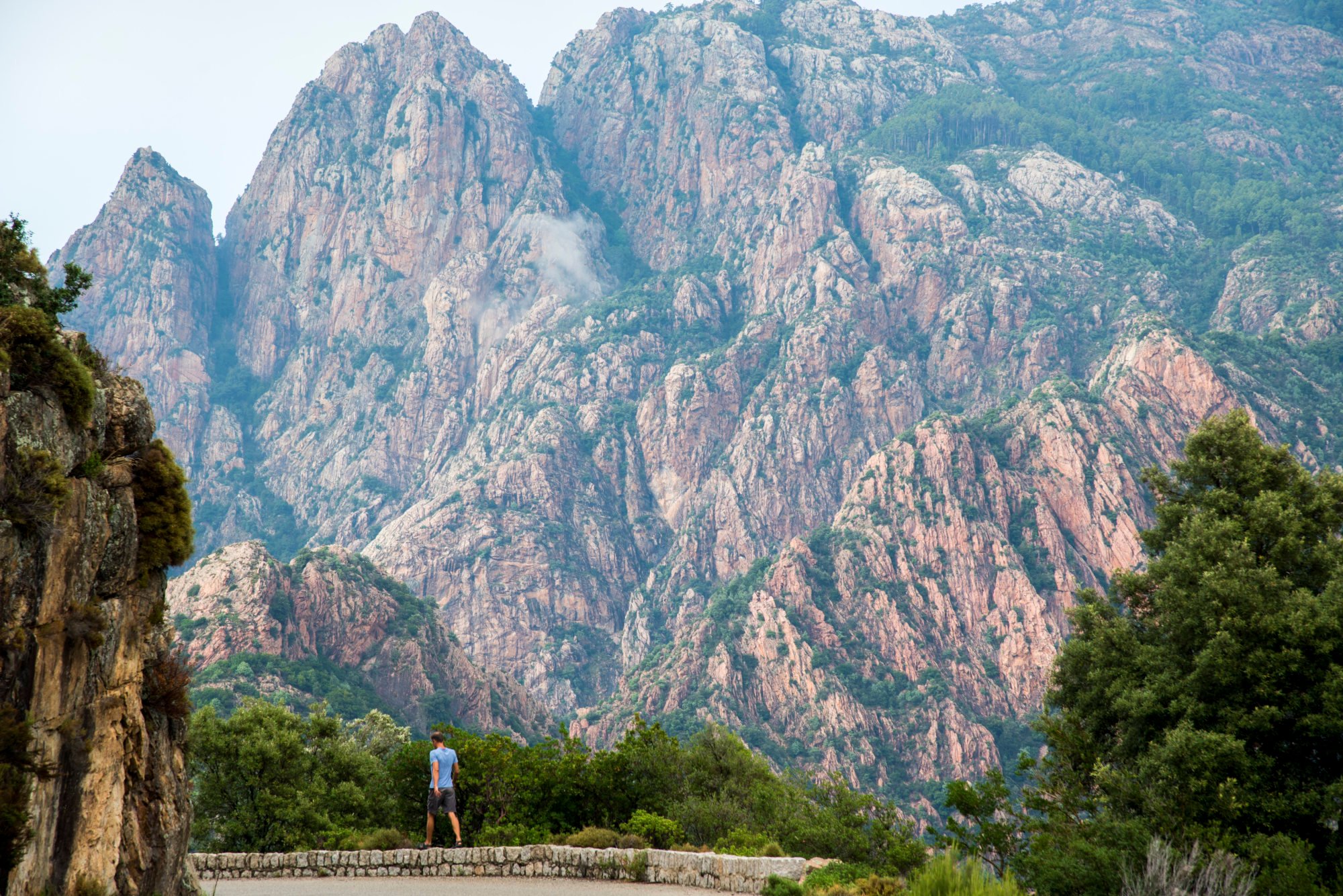
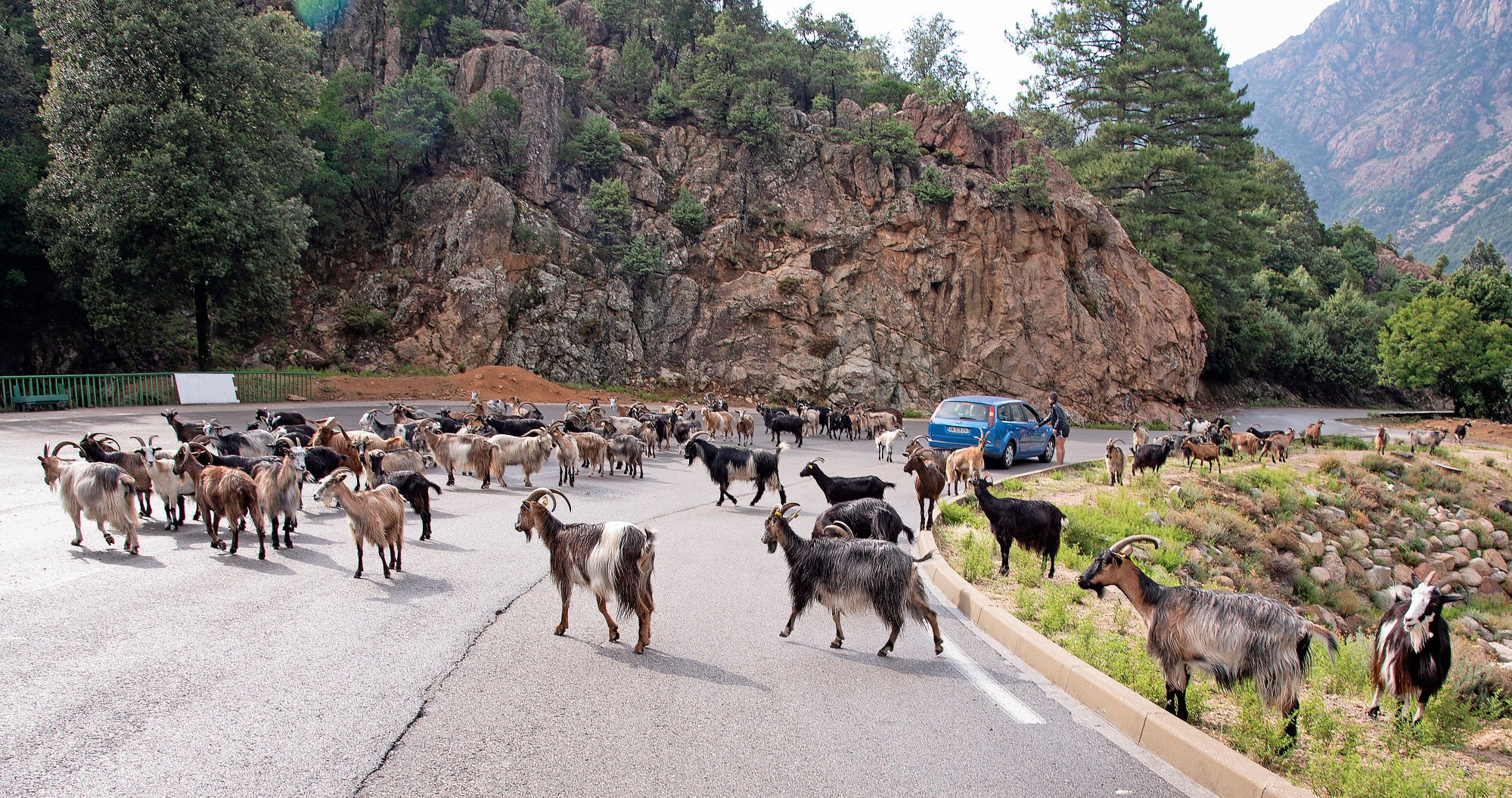
Fortunately there are plenty of places to pull over, recompose yourself and marvel at the Mediterranean island’s rugged interior.
Villages cling to hillsides crowned with jagged granite peaks, pine forests cloak lowland slopes, and meadows of wild flowers carpet the countryside. Given the lofty terrain, the Corsicans did well to find space to build four airports.
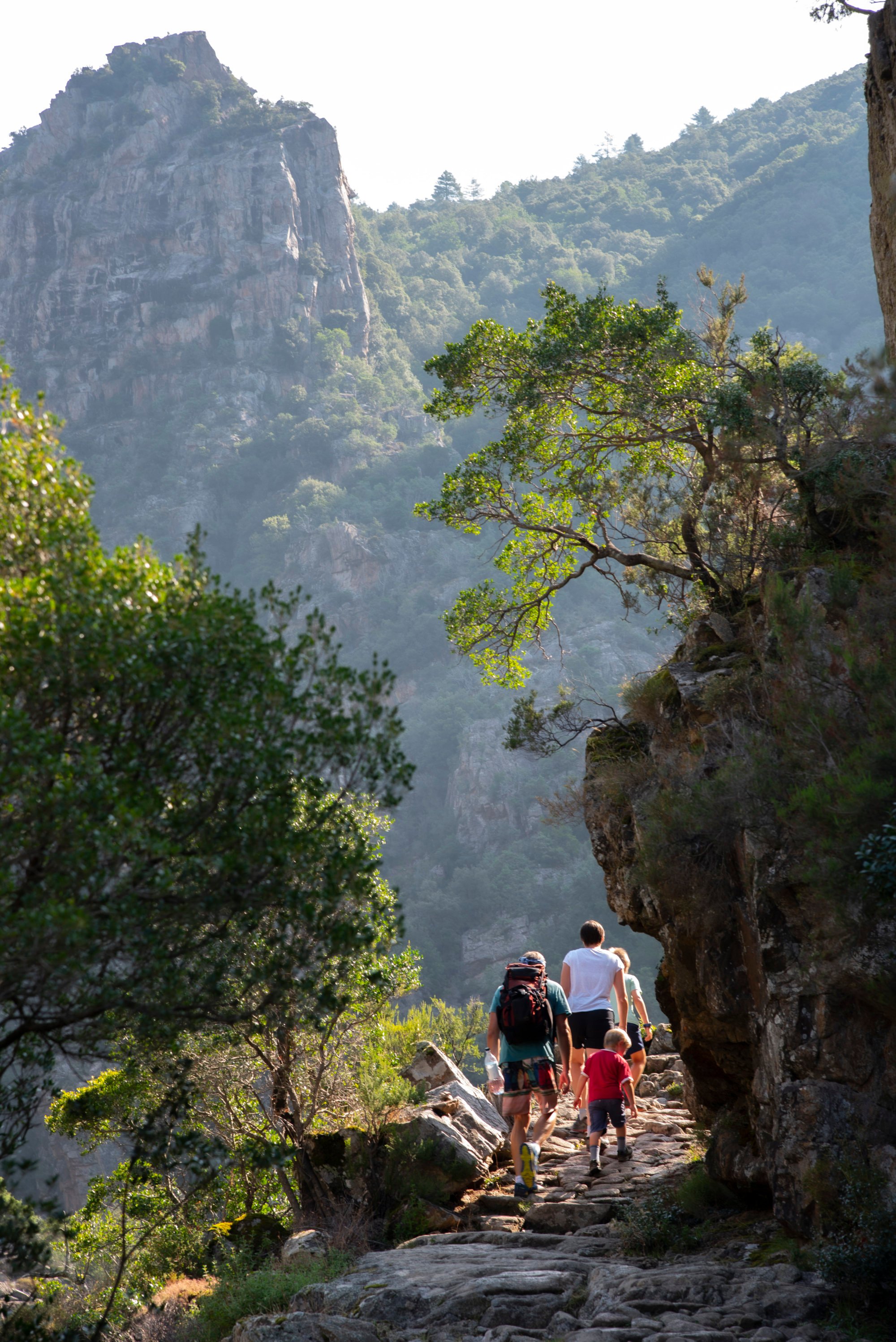
Many tourists steer clear of roads and rental cars and head into the hills on foot. Footpaths such as the 180km (110-mile) GR20 long-distance trail test the fitness levels of hikers on what is arguably the most demanding and dangerous walking route in Europe.
A mutter of thunder coincides with my arrival in the photogenic settlement of Ota and I hurry into my guest house just as raindrops begin to plummet out of a sullen sky.
High above, at the summit of Mont Capu d’Ota, a perilously positioned boulder looks like it could tumble down and flatten the village at any minute.

According to my hosts, I needn’t worry. Legend has it the giant rock is held in place by chains constructed by monks who take it in turns to keep watch and protect the village.
I am not entirely reassured and cannot help wondering why, if the monks have got everything under control, there are so many road signs warning of falling boulders.
Eventually the clouds part a little to reveal misty vistas and sublime snatches of scenery. I decide on a short walk along the picturesque Gorges de la Spelunca.

The river valley is connected by mule trails that lead through a wooded gorge to refreshing plunge pools and arched bridges dating back to the Genoese occupation of Corsica in the Middle Ages.
Talking of medieval times, the Corsican language, which is more closely related to Italian than French, has been around in some form or other since the ninth century, and is still widely used across the island.
Place-name signs are bilingual, although the French version is often spray-painted out or riddled with bullet holes.

“Does every Corsican carry a gun?” I ask at my hotel in the charming city of Ajaccio (Aiacciu, in the local lingo).
“Only hunters and people who like shooting at French-language signs,” comes the reply. Folks in these parts are proudly Corsican first and reluctantly French second.
“These days it’s more of a graffiti campaign than anything serious,” a clerk says, with a shrug. I’ve seen “Corsica Libera!” (“Free Corsica!”) and “Corsica Nazione” (“Corsica Nation”) daubed on walls but I’ve also heard that hostilities are never far beneath the surface.
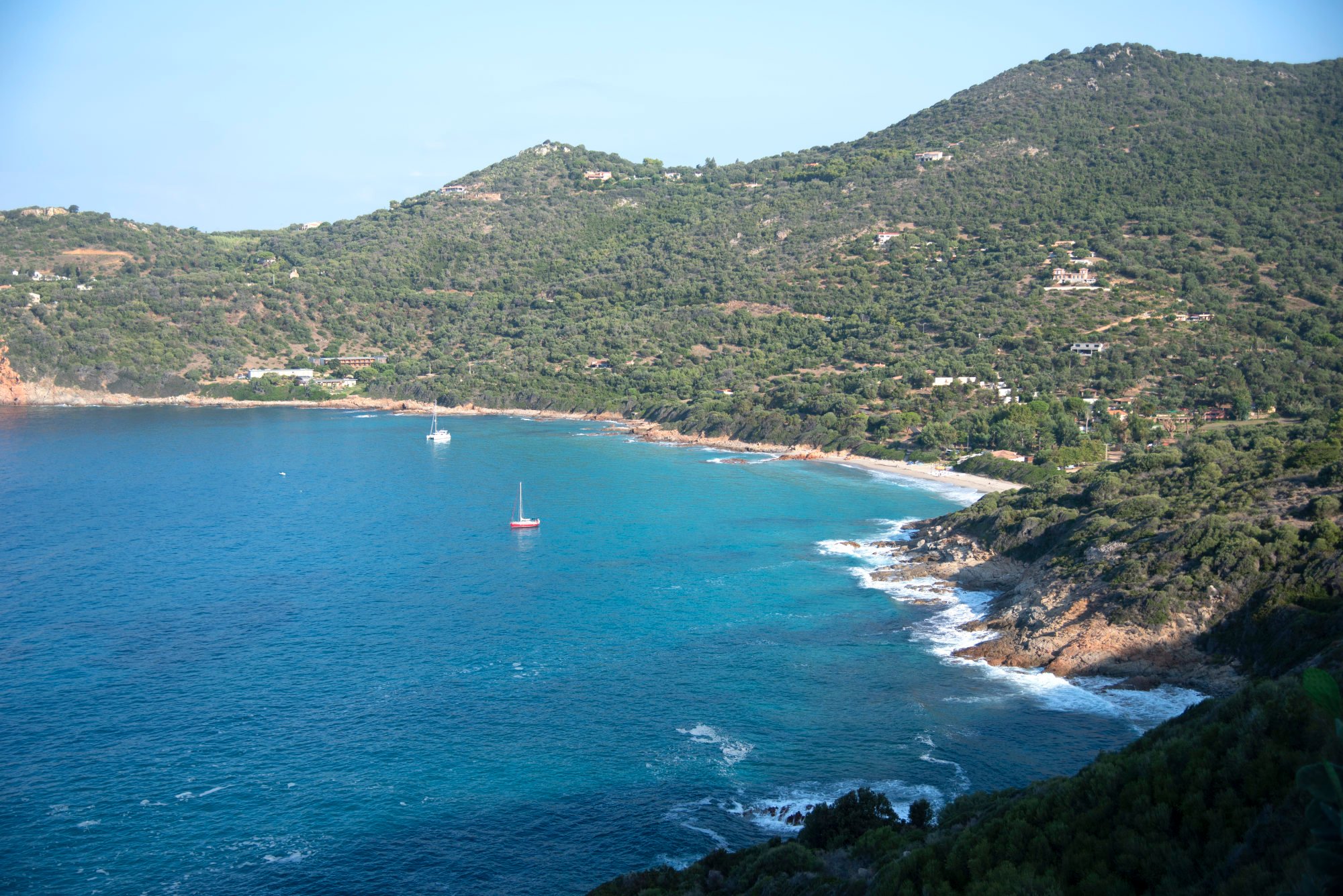
I am in Ajaccio to find out about another French leader with some experience of conflict.
Napoleon Bonaparte (1769-1821) is the island’s biggest tourism asset. The military tactician and emperor spent the first nine years of his life in a house on Rue Saint-Charles, a property that now serves as Corsica’s national museum.

The former family home feels somewhat cramped in its current role, particularly as two cruise ships are in town.
Forty people would not overwhelm many tourist attractions but as I shuffle along with the seniors, it becomes clear that Maison Bonaparte will soon need to introduce timed entry slots and daily visitor caps.
I arrive in the 16th century hilltop town of Sartène just as the setting sun is painting the “most Corsican of Corsican towns” in honeyed hues. Shopkeepers chat with passers-by; grandmas hang laundry on lines strung high above narrow lanes; and, in the main square, children burn off energy before bedtime.
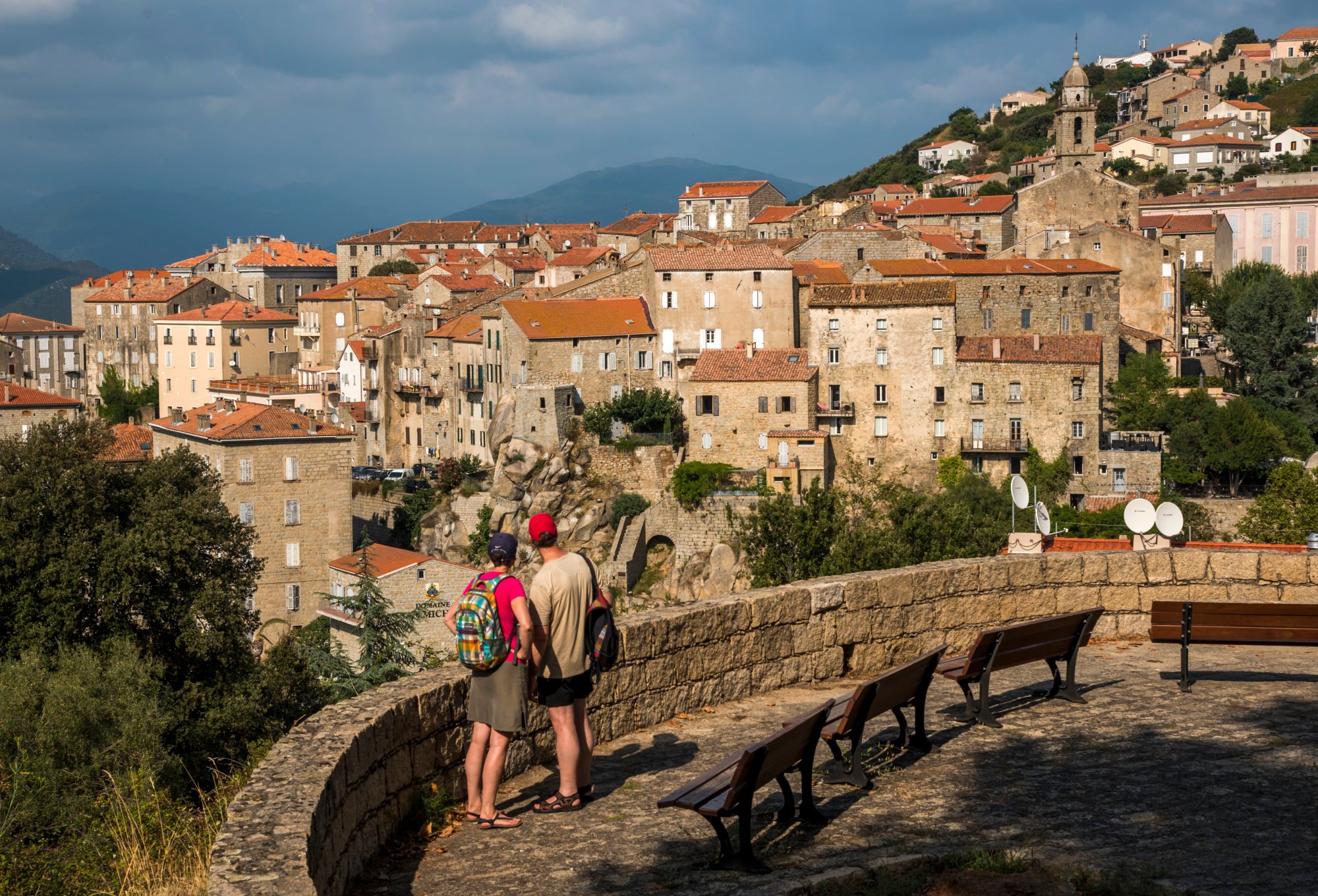
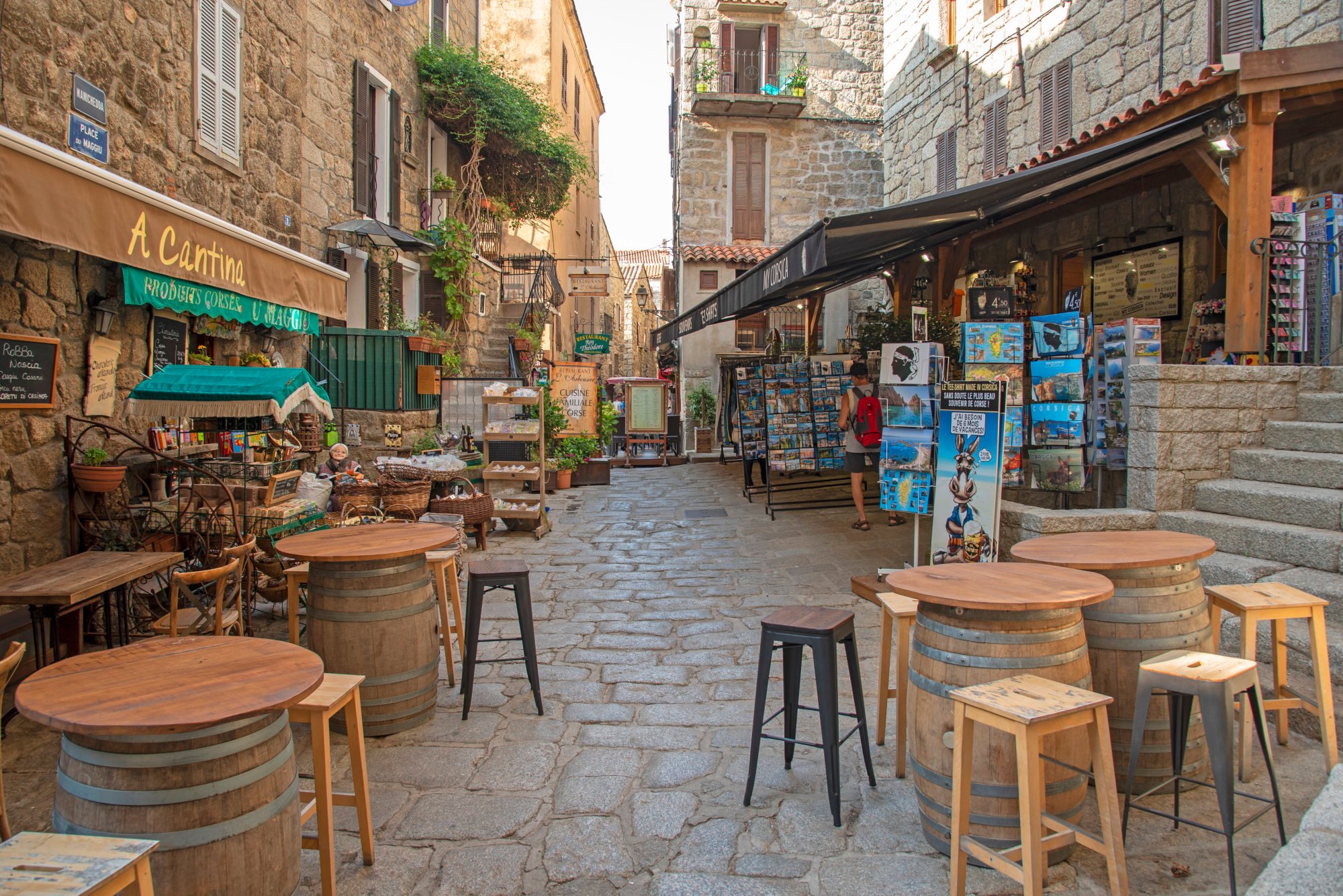
I find a busy restaurant with tables spilling onto the street and order the island’s signature dish: wild boar stewed in wine, paired with a glass of something red, robust and Corsican.
Early the following morning I drive the short distance to the town of Bonifacio (Bunifaziu).
Corsica’s southernmost town is spectacularly perched on a limestone plateau overlooking the Tyrrhenian Sea and dawn is a time of ethereal beauty.
While I am fiddling with my camera, the first ferry of the day carves through the glistening water as it pootles over to the Italian island of Sardinia, 17km away.
The crossing takes less than an hour, which opens up the possibility of two-centre holidays. Or just pop over for a lunchtime pizza, as I did.

Despite being adored by French tourists, Bonifacio feels more Italian – from its street names and ice-cream parlours to the Genoa dialect spoken hereabouts.
The walled citadel is still entered via an ancient drawbridge and the echoing cobblestone alleyways are at their most atmospheric while most tourists are still fast asleep.
I am tempted to linger over a lazy breakfast but the island’s beaches beckon and Corsica is home to some of Europe’s most exquisite.
Palombaggia is a creamy crescent of sand lapped by calm, clear water so swimming-pool-like, you can almost smell chlorine. Evergreen trees provide shade and unless you visit on a weekend at the height of summer, there’s enough room for everyone.
The car park gets busy, but that’s a good thing as it means fewer Corsican drivers are out harassing tourists.

